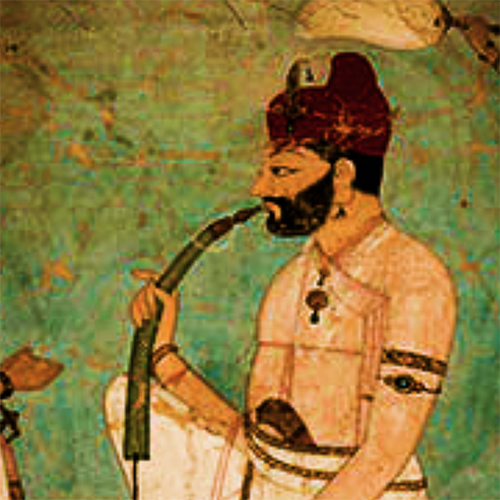
Hookah smoking is supposed to have begun in medieval India. You can watch detail video here. It was once the province of the wealthy, although it was extremely popular, particularly during Mughal rule. The hookah has since been less popular; however, it is regaining popularity, and cafes and restaurants that provide it as a consumable, are popular. Hookah smoking was not just a custom in ancient India, but it was also a matter of pride. Hookahs were popular among the wealthy and landed classes.
A deep dive: Tobacco was introduced to Mughal emperor Akbar the Great (1542-1605 AD) in the Indian city of Fatehpur Sikri by Roman Catholic missionaries from the southern part of the country. According to Louis Rousselet, the hookah was invented in India by Akbar's physician, Hakim Aboul Futteh Ghilani. However, a quatrain of Ahl Shirazi (d. 1535), a Persian poet, refers to the use of the alyn (Falsaf, II, p. 277; Semsr, 1963, p. 15), dating its use back to the time of Shah Ahmsp I. As a result, Abu'l-Fath Gilani appears to be attributed for introducing the alyn, which was already in use in Persia, into India. However, there is no evidence of the water pipe prior to the 1560s. Furthermore, tobacco is thought to have arrived in India in the 17th century, and cannabis was previously smoked in India, implying that another material was presumably smoked in Ahl Shirazi's quatrain, possibly through another way.
Following the European introduction of tobacco to Persia and India, Hakim Abu'l-Fath Gilani travelled to Hamarastan from Gilan, a province in northern Persia. He later worked as a physician in the Mughal court, raising health concerns after tobacco smoking grew widespread among Indian noblemen. He later envisioned a method that would allow smoke to be 'purified' by passing it through water. Gilani popularised the alyn after Asad Beg, the Bijapur diplomat, pushed Akbar I to start smoking. Following its popularity among noblemen, this novel smoking gadget quickly became a status symbol for India's aristocracy and gentry.
Manufacturers are increasingly using stainless steel and aluminium in place of copper, brass, and low-quality alloys. Hookah hoses are made of silicone rubber compounds rather than leather or wire. Modern hookahs are more robust, reduce odours while smoking, and can be washed without risk of corrosion or bacterial deterioration. Hookahs are changing in appearance because to new technologies and modern design trends. Despite the obvious benefits of modern hookahs, most hookahs are still created using older technology due to high production costs and a lack of modern equipment in traditional hookah producing zones.